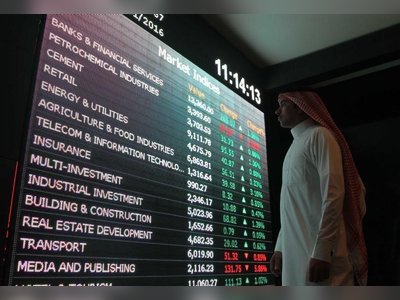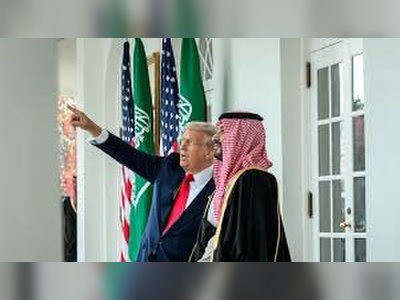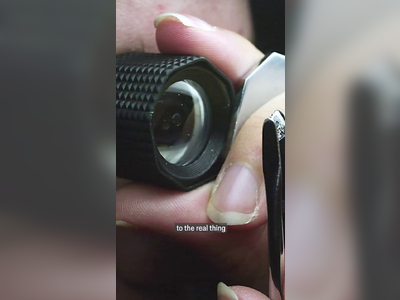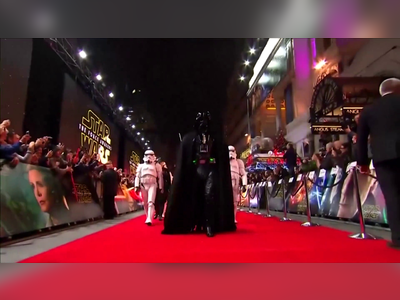
Iran, North Korea had an abysmal 2020 - analysis
Pyongyang and Tehran have both lost ground in their respective standoffs with the US – and Israeli security is marginally better for the time being because of this.
Parades, missiles and confetti look good for photos, but even with two months left on the clock, it is clear that both Iran and North Korea had a truly abysmal 2020.
Pyongyang and Tehran have both lost ground in their respective standoffs with the US, and Israeli security is marginally better for the time being because of this.
A decision by Kim Jong-un, North Korea’s supreme leader, to display his potentially largest Intercontinental Ballistic Missile (ICBM) ever in a parade this past weekend does nothing to change that.
There are two key takeaways from the parade for North Korea-US issues and one for Iran-US-Israel issues. They all ultimately highlight North Korea's and Iran's relative weakness at the moment.
One is that presuming Pyongyang already had the ability to strike the US with a nuclear ICBM since 2017, it may now be able to fire certain ICBMs with multiple warhead delivery vehicles.
That means that if the US hoped to use its THAAD and other anti-missile capabilities to shoot down such an attack from the North, it might now be harder to do so against multiple nuclear warhead attacks at the same time.
But in a sense, even this is not new, since Kim has had an estimated arsenal of dozens of nuclear weapons since 2017.That means the first takeaway is that North Korea has at most a smaller tactical victory.
If there would be an all-out war, then rather than North Korea responding to a US strike with one missile and one nuclear weapon, the rogue regime could attack back with a missile loaded with multiple nuclear weapons.
Maybe before the weekend, Kim would have had a harder time firing off multiple nuclear weapons in the face of possible US air or drone strikes.
A second takeaway is what did not happen: There was no nuclear test. The absence of a test made Kim look weak – and that is far more important. It also makes him look bad and shows how awful the year was for North Korea.
Why is this relevant? Because of what happened before 2020.
THE YEAR 2020 started with Kim failing to deliver on a dangerous Christmas 2019 surprise to pressure the US, as well as making extravagant threats in January, which also never panned out.
Many thought Kim would resort to a new nuclear test to pressure the Trump administration into a more flexible position in nuclear negotiations. But it appears that fears of retaliation diluted any real follow through on his threat.
This ultimately makes Kim’s display of a new massive missile a relatively muted temper tantrum.
Regarding the Iran takeaway, there is a long past history of Tehran and Pyongyang sharing nuclear technology.
Shortly before becoming Trump’s national security adviser, John Bolton noted to The Jerusalem Post in 2017 that the North could present Iran with a turnkey ready-to-go nuclear weapon “by wire transfer” at any time.
This past history was highlighted in September by an anonymous US official.
However, it has started to appear that all of the US officials’ anonymous comments were more of a public relations effort to raise support for snapping back sanctions on Iran than a real military threat.
First, the US official bizarrely warned in a Reuters article that Iran could have a nuclear weapon by the end of 2020, though no one in the US or Israeli intelligence communities believes this.
True, Iran could enrich sufficient uranium for a weapon by then, but that is where things have been since March, and it would still need to solve problems it has with firing and delivering such a weapon. While maintaining the arms embargo is important to pressure Iran generally and hold back its conventional weapons, it is not a major technical issue in the nuclear sphere.
Next, for good measure, the anonymous US official tossed in the words "North Korea,” without offering any evidence.
THEORETICALLY, it is possible that North Korea has secretly pushed Iran's abilities forward in being able to deliver a nuclear warhead on one of its wide range of ballistic missiles.
But as both US-Israel intelligence officials and outside nuclear experts have said, that cooperation stopped in any significant way once Iran chose a different technical path and opted to develop its own native-built technology.
The countries still cooperate, but the scenario of North Korea helping Iran leapfrog at this point is not taken seriously by these officials. This is mostly because Tehran wants to master the entire weapons cycle itself and does not need help from the North.
Rather, whether Iran moves toward a nuclear weapon or not is a political decision.
It absolutely has the capabilities for enriching uranium and can likely solve some issues unique to placing a nuclear warhead on a ballistic missile without any help from Pyongyang.
Moreover, for decades Iran has had ballistic missiles which can reach Israel. So, the only thing North Korea might really be able to give Iran is the ability to strike the US. The bottom line for Israel is that the danger Iran can present if it works with North Korea is about equal to the danger it presents on its own.
But to date, no one has provided a turnkey nuclear weapon ready-to-go, even though Pakistan and North Korea could have given this to Iran at any moment.
THE UN arms embargo on Iran expires next week, but no one seriously believes that such an embargo would have stopped Pakistan or North Korea from providing the Islamic Republic with nuclear technology if they were determined to do so.
The only way to prevent that is US, Israeli and allied intelligence and potential military interceptions.
But Iran has not tried to break out toward a nuclear weapon in 2020 and shows no sign of trying to do so.
In fact, since May and maybe even March, it essentially halted its qualitative progress toward a nuclear weapon. It has been deterred in 2020 by both US and Israeli actions and by the coronavirus crisis.
The year 2020 started in January with the US targeted killing of Iran Islamic Revolutionary Guards Corps Quds Force chief Qasem Soleimani.
Sources close to Mossad Director Yossi Cohen have previously told the Post that Soleimani’s replacement, Maj. Gen. Esmail Ghaani, is not considered a star or as great a threat as his predecessor. Ghaani spent decades as a background and support figure to Soleimani and was less familiar with Israel and Middle East operations.
This past weekend, outgoing IDF intelligence analysis chief Dror Shalom confirmed to Yediot Ahronot that, even 10 months later, Ghaani has failed to live up to posing the same threat that Soleimani did.
NEXT, AS badly as Israel and others were hit by corona, Iran and its nuclear program were hit far worse.
On Sunday, Iran confirmed that its nuclear chief was infected, and the country has had over half a million citizens infected to date and tens of thousands of dead from the pandemic – and these numbers are likely lower than the real numbers.
Already in March, Israeli intelligence sources told the Post that due to the coronavirus crisis, Iran could not maintain the same pace of uranium enrichment and other related nuclear weapons program activities.
Sources said that Iran was among the hardest hit by the corona crisis, and that there was no part of the country or the leadership, including Iran’s nuclear experts, that has not been compromised.
Recall that until corona in March, throughout the “maximum pressure” sanctions campaign, even though Iran’s footprint in Lebanon and Hezbollah had been shakier, its nuclear output and violations had actually increased.
In contrast, corona is an issue that disregards efforts to limit its impact. Anywhere there are humans, and nuclear scientists are still key to advancing a nuclear program, there can be infection and the program can be slowed.
But even after May 2020, the Islamic Republic continued to expand its use of advanced centrifuges, which were always an X factor that could potentially have allowed the ayatollahs to leap forward past the expected time frames for uranium enrichment.
Then came Iran’s disastrous and embarrassing summer of 2020, when it saw around a dozen explosions at Iranian facilities, several of them likely nuclear related.
The July 2 explosion at Natanz set Tehran’s advanced centrifuge program back by a year or more, as confirmed by both official and non-government sources.
This removed from the table a major Iranian tool for shortening the time until breakout to a nuclear weapon.
Certainly, North Korea’s new massive missile is a sign for concern.
Israeli and US intelligence must be as vigilant as ever in preventing Iran from getting any closer to a nuclear weapon, whether on its own or with North Korea – or even any unknown rogue actors in Pakistan.
But in 2020 both North Korea and Iran failed to achieve their objectives.
They both came off looking like, if not paper tigers, countries which were more worried about how their adversaries would respond to escalation than countries looking for ways to escalate.
No photo-op missile parade can hide that fact.
Pyongyang and Tehran have both lost ground in their respective standoffs with the US, and Israeli security is marginally better for the time being because of this.
A decision by Kim Jong-un, North Korea’s supreme leader, to display his potentially largest Intercontinental Ballistic Missile (ICBM) ever in a parade this past weekend does nothing to change that.
There are two key takeaways from the parade for North Korea-US issues and one for Iran-US-Israel issues. They all ultimately highlight North Korea's and Iran's relative weakness at the moment.
One is that presuming Pyongyang already had the ability to strike the US with a nuclear ICBM since 2017, it may now be able to fire certain ICBMs with multiple warhead delivery vehicles.
That means that if the US hoped to use its THAAD and other anti-missile capabilities to shoot down such an attack from the North, it might now be harder to do so against multiple nuclear warhead attacks at the same time.
But in a sense, even this is not new, since Kim has had an estimated arsenal of dozens of nuclear weapons since 2017.That means the first takeaway is that North Korea has at most a smaller tactical victory.
If there would be an all-out war, then rather than North Korea responding to a US strike with one missile and one nuclear weapon, the rogue regime could attack back with a missile loaded with multiple nuclear weapons.
Maybe before the weekend, Kim would have had a harder time firing off multiple nuclear weapons in the face of possible US air or drone strikes.
A second takeaway is what did not happen: There was no nuclear test. The absence of a test made Kim look weak – and that is far more important. It also makes him look bad and shows how awful the year was for North Korea.
Why is this relevant? Because of what happened before 2020.
THE YEAR 2020 started with Kim failing to deliver on a dangerous Christmas 2019 surprise to pressure the US, as well as making extravagant threats in January, which also never panned out.
Many thought Kim would resort to a new nuclear test to pressure the Trump administration into a more flexible position in nuclear negotiations. But it appears that fears of retaliation diluted any real follow through on his threat.
This ultimately makes Kim’s display of a new massive missile a relatively muted temper tantrum.
Regarding the Iran takeaway, there is a long past history of Tehran and Pyongyang sharing nuclear technology.
Shortly before becoming Trump’s national security adviser, John Bolton noted to The Jerusalem Post in 2017 that the North could present Iran with a turnkey ready-to-go nuclear weapon “by wire transfer” at any time.
This past history was highlighted in September by an anonymous US official.
However, it has started to appear that all of the US officials’ anonymous comments were more of a public relations effort to raise support for snapping back sanctions on Iran than a real military threat.
First, the US official bizarrely warned in a Reuters article that Iran could have a nuclear weapon by the end of 2020, though no one in the US or Israeli intelligence communities believes this.
True, Iran could enrich sufficient uranium for a weapon by then, but that is where things have been since March, and it would still need to solve problems it has with firing and delivering such a weapon. While maintaining the arms embargo is important to pressure Iran generally and hold back its conventional weapons, it is not a major technical issue in the nuclear sphere.
Next, for good measure, the anonymous US official tossed in the words "North Korea,” without offering any evidence.
THEORETICALLY, it is possible that North Korea has secretly pushed Iran's abilities forward in being able to deliver a nuclear warhead on one of its wide range of ballistic missiles.
But as both US-Israel intelligence officials and outside nuclear experts have said, that cooperation stopped in any significant way once Iran chose a different technical path and opted to develop its own native-built technology.
The countries still cooperate, but the scenario of North Korea helping Iran leapfrog at this point is not taken seriously by these officials. This is mostly because Tehran wants to master the entire weapons cycle itself and does not need help from the North.
Rather, whether Iran moves toward a nuclear weapon or not is a political decision.
It absolutely has the capabilities for enriching uranium and can likely solve some issues unique to placing a nuclear warhead on a ballistic missile without any help from Pyongyang.
Moreover, for decades Iran has had ballistic missiles which can reach Israel. So, the only thing North Korea might really be able to give Iran is the ability to strike the US. The bottom line for Israel is that the danger Iran can present if it works with North Korea is about equal to the danger it presents on its own.
But to date, no one has provided a turnkey nuclear weapon ready-to-go, even though Pakistan and North Korea could have given this to Iran at any moment.
THE UN arms embargo on Iran expires next week, but no one seriously believes that such an embargo would have stopped Pakistan or North Korea from providing the Islamic Republic with nuclear technology if they were determined to do so.
The only way to prevent that is US, Israeli and allied intelligence and potential military interceptions.
But Iran has not tried to break out toward a nuclear weapon in 2020 and shows no sign of trying to do so.
In fact, since May and maybe even March, it essentially halted its qualitative progress toward a nuclear weapon. It has been deterred in 2020 by both US and Israeli actions and by the coronavirus crisis.
The year 2020 started in January with the US targeted killing of Iran Islamic Revolutionary Guards Corps Quds Force chief Qasem Soleimani.
Sources close to Mossad Director Yossi Cohen have previously told the Post that Soleimani’s replacement, Maj. Gen. Esmail Ghaani, is not considered a star or as great a threat as his predecessor. Ghaani spent decades as a background and support figure to Soleimani and was less familiar with Israel and Middle East operations.
This past weekend, outgoing IDF intelligence analysis chief Dror Shalom confirmed to Yediot Ahronot that, even 10 months later, Ghaani has failed to live up to posing the same threat that Soleimani did.
NEXT, AS badly as Israel and others were hit by corona, Iran and its nuclear program were hit far worse.
On Sunday, Iran confirmed that its nuclear chief was infected, and the country has had over half a million citizens infected to date and tens of thousands of dead from the pandemic – and these numbers are likely lower than the real numbers.
Already in March, Israeli intelligence sources told the Post that due to the coronavirus crisis, Iran could not maintain the same pace of uranium enrichment and other related nuclear weapons program activities.
Sources said that Iran was among the hardest hit by the corona crisis, and that there was no part of the country or the leadership, including Iran’s nuclear experts, that has not been compromised.
Recall that until corona in March, throughout the “maximum pressure” sanctions campaign, even though Iran’s footprint in Lebanon and Hezbollah had been shakier, its nuclear output and violations had actually increased.
In contrast, corona is an issue that disregards efforts to limit its impact. Anywhere there are humans, and nuclear scientists are still key to advancing a nuclear program, there can be infection and the program can be slowed.
But even after May 2020, the Islamic Republic continued to expand its use of advanced centrifuges, which were always an X factor that could potentially have allowed the ayatollahs to leap forward past the expected time frames for uranium enrichment.
Then came Iran’s disastrous and embarrassing summer of 2020, when it saw around a dozen explosions at Iranian facilities, several of them likely nuclear related.
The July 2 explosion at Natanz set Tehran’s advanced centrifuge program back by a year or more, as confirmed by both official and non-government sources.
This removed from the table a major Iranian tool for shortening the time until breakout to a nuclear weapon.
Certainly, North Korea’s new massive missile is a sign for concern.
Israeli and US intelligence must be as vigilant as ever in preventing Iran from getting any closer to a nuclear weapon, whether on its own or with North Korea – or even any unknown rogue actors in Pakistan.
But in 2020 both North Korea and Iran failed to achieve their objectives.
They both came off looking like, if not paper tigers, countries which were more worried about how their adversaries would respond to escalation than countries looking for ways to escalate.
No photo-op missile parade can hide that fact.











